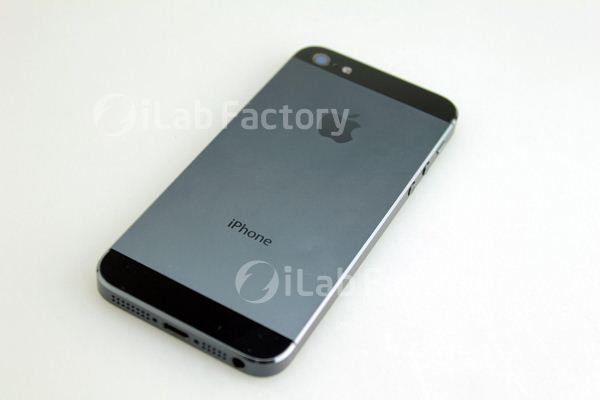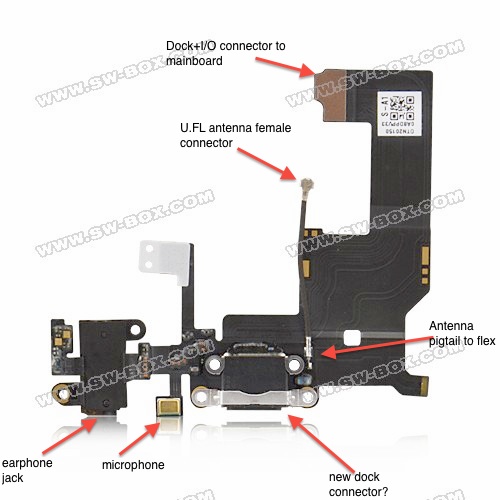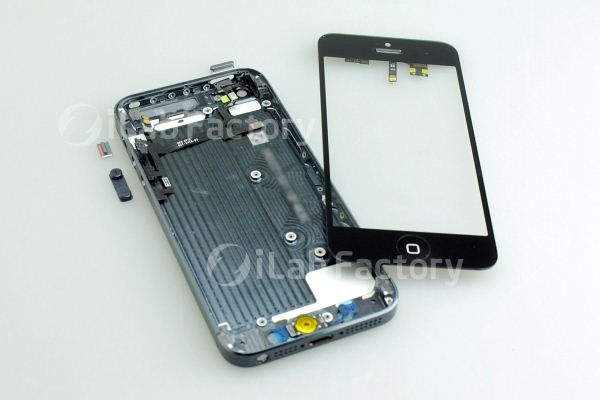Preparing for the iPhone Next: Rumors Analyzed
by Brian Klug & Anand Lal Shimpi on August 27, 2012 9:40 PM EST- Posted in
- Smartphones
- Apple
- Mobile
- iPhone
While we typically don't comment on rumors we don't know to be true at AnandTech, we often get requests to help set rational expectations ahead of major iDevice launches. The shroud of secrecy around major Apple launches can pave the way for both sensible and unrealistic conclusions.
Given the growth of Apple's iPhone/iPad devices, it has become increasingly difficult for suppliers in the chain to remain mum about any changes. Similar to how we often get early access to CPUs, motherboards and other components out of Taiwan, it has become increasingly commonplace to see leaks of iDevice components out of the big ODMs in China.
Apple is largely expected to launch its sixth iPhone next month. The historical cadence of design, SoC, and cellular changes are in the table below:
| Apple iPhone - Historical Trends | |||||||
| Release Year | Industrial Design | CPU Architecture | GPU Architecture | Cellular Architecture | |||
| iPhone | 2007 | 1st gen | ARM11 | MBX-lite | Infineon S-Gold 2 | ||
| iPhone 3G | 2008 | 2nd gen | ARM11 | MBX-lite | Infineon X-Gold 608 | ||
| iPhone 3GS | 2009 | 2nd gen | Cortex A8 | SGX-535 | Infineon X-Gold 608 | ||
| iPhone 4 | 2010 | 3rd gen | Cortex A8 | SGX-535 | Infineon X-Gold 618 in 4 GSM / Qualcomm MDM6600 in 4 CDMA | ||
| iPhone 4S | 2011 | 3rd gen | 2 x Cortex A9 | SGX-543MP2 | Qualcomm MDM6610 (MDM6600 w/ ext. trans) | ||
| iPhone Next | 2012 | ? | ? | ? | ? | ||
Trends are pretty easy to spot in the table. With the exception of the first iPhone, the industrial design appears to be on a 2-year cadence. The CPU and GPU architectures are also on the same 2-year cadence. From a silicon standpoint even the cellular architecture is trending towards the same 2-year cadence, with a few notable exceptions (e.g. GSM/CDMA iPhone 4 divide).
Based on historical trends alone it's pretty easy to conclude that we'll see a 4th generation chassis, a pair of ARM Cortex A9s and a PowerVR SGX 543MP2 under the hood. Add the assumption of LTE (a reasonable one to make) and you have a pretty believable story. It turns out the currently available evidence helps corroborate this, but let's dig through what's out there to see how this all fits.
Chassis & Display
The chassis is largely a known quantity by this point. Enough examples out of China have surfaced to support the current working theory of a 4-inch diagonal (16:9) display in a slightly taller chassis with roughly the same width. Put simply, it's a new taller aspect ratio, which also has the consequence of including a larger 4-inch, 640 x 1136 display. The result is a change only in one dimension for developers to worry about.
The other big rumored change is a move from on-cell touch sensing (which places the drive and detect ITO layers above the LCD assembly) to an in-cell touch solution. In-cell being the operative word because the drive layers are integrated into the LCD gating (or use it natively), or on the color filter layer. There's some debate about what counts as on-cell and in-cell that isn't quite settled, but ultimately what it boils down to is a thinner display stack that will contribute significantly to the reduction in overall device thickness that is rumored for the upcoming iPhone.
While the industrial design remains quite similar at a high level, there do appear to be some major changes. Where the 4 and 4S designs used front and back glass with an external metal band for support, the leaked designs out of China feature a metal unibody construction with cutouts for RF windows at top and bottom. There's enough evidence of this from the CNC machine marks visible on examples, and moreover moving to a larger form factor requires a beefier chassis.

Black regions at top and bottom are likely RF window cutouts
With top and bottom RF windows (which appear to be glass) there shouldn't be any implications on antenna performance for cellular. If you followed our coverage of the evolution of Apple's cellular antenna design from the iPhone 4 GSM, to 4 CDMA, to 4S, you'll notice that this is a clear next step, largely inheriting the top/bottom antenna split from the 4S which fully mitigated deathgrip. Interestingly enough the exterior band appears to have a different chrome finish rather than the matte stainless steel of previous designs.

Bottom flex cable, annotations ours
Other things like moving the 3.5mm headphone jack to the bottom of the device and the mini 9-pin dock connector are fairly well corroborated by leaks with components that all fit together inside the case. Interestingly enough, parts indicating the mini dock connector and relocated headphone jack have been circulating for nearly 4 months.











131 Comments
View All Comments
Super56K - Friday, August 31, 2012 - link
jwcalla, you're (selectively?) forgetting the obvious: Apple is a major player that sells a ton of gadgets, but maintains a small product portfolio. Whether you want to see them fail or succeed, it brings in everyone. Want to kill the hype machine? Do your part and not click these articles or talk about it with others. Can't do that? Well, that's hype for you.Super56K - Friday, August 31, 2012 - link
You are a sad individual. 1(!) current Apple article is too many for you? Really?Torrijos - Tuesday, August 28, 2012 - link
While they're always nice to get a good result in some benchmarks I doubt their usefulness right now, even with Apple pushing an easy to implement concurrency/distribution model with Grand Central Dispatch most apps aren't going to benefit directly from quad cores CPU without further optimization.The type of apps that push the phones to their limits right now are games, and in that area Apple keeps providing very good GPU (still unbeaten in the tablet market).
It would be pretty interesting to know the kind of influence network performance has on real life usage...
While some web-centric benchmarks show quad cores outperforming old CPU badly, would those benefits disappear when browsing in a slow area connection? At what effective bandwidth is the new CPU unable to provide better global performance?
This could be tested by limiting your server upload bandwidth on the wifi, to simulated a non-optimal connection area.
versesuvius - Tuesday, August 28, 2012 - link
No matter which theft of ideas, apple manages to turn into glossy status symbols, no one should buy any iSh.. anymore. iSh.. has turned into a symbol of stupidity and greed all over the world.Just as brandishing an Apple product would say something, now owning a non iSh... makes the same statement quite forcefully.
Sh.. yourself none. Don't buy iSh..!
A5 - Tuesday, August 28, 2012 - link
Oh man, you're so clever! You really convinced everyone with that amazing argument! Thanks!versesuvius - Tuesday, August 28, 2012 - link
Thank you, very much! I know I am happy with no iSh.. polluting my environment. Your environment is up to you, which is painfully obvious anyway.swb311 - Tuesday, August 28, 2012 - link
Who let you onto the internet?versesuvius - Tuesday, August 28, 2012 - link
I assure you that I was here before you were born. I read Anand's first article(s) on a 5.6 kbps dial up modem. I know what I am talking about. Shed the iSh.. . It is that time of the day!KoolAidMan1 - Tuesday, August 28, 2012 - link
I see, so you're old AND stupid. Fantastic :)versesuvius - Tuesday, August 28, 2012 - link
Yeah, just like your parents.Youth is a gift that you obviously do not deserve. It is good to see that it is wasted on iSh..!